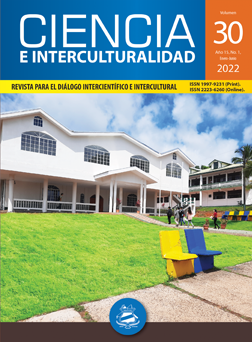Elements for a didactic argument from the historical study of Newton's Fundamental Theorem of Calculus
DOI:
https://doi.org/10.5377/rci.v30i01.14241Keywords:
fundamental theorem of calculus, the problem of tangents, the problem of areas, argument, NewtonAbstract
This paper, which follows the historiographic approach and is framed within the author's doctoral thesis research, it evidences an argument employed by Isaac Newton in his studies that culminated in a version of what is currently recognized as the Fundamental Theorem of Calculus (FTC). From this perspective, the CFT will be analyzed in four different periods, 1665, 1666, 1669, and 1704 of Newton's work. The characteristics of this argument can be converted into a structure for alternative presentation in the TFC teaching to university students since heuristics plays an important role in problem-solving. Then, the pretension that it becomes another resource for the teaching of TFC would be based on retaking it as the relation between the problem of the areas and the inverse problem of the tangents, beyond the usual one, i.e., the inverse relationship between the derivative and the integral.
Downloads
510
PDF (Español (España)) 314
HTML (Español (España)) 33
EPUB (Español (España)) 114
XML (Español (España)) 163
Abstract 110
Downloads
Published
How to Cite
Issue
Section
License

This work is licensed under a Creative Commons Attribution-NonCommercial-NoDerivatives 4.0 International License.
Copyright © (URACCAN)

This journal is licensed under a Creative Commons Attribution-NonCommercial-NoDerivatives 4.0 International License.
This license allows others to download the works and share them with others, as long as their authorship is acknowledged, but they can not be changed in any way nor can they be used commercially.




